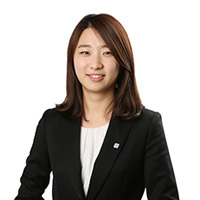Open skies: ‘Flying vehicles’ will solve side effects of hyperurbanization
By Jo He-rimPublished : Sept. 8, 2021 - 19:44

SEOGWIPO, Jeju Island -- Urban air mobility is the ultimate solution to the side effects of hyperurbanization, and businesses and governments alike should work together to open up the skyway, a Hyundai Motor executive in charge of the UAM business said Wednesday.
“Urbanization is rapidly progressing around the world, and the serious traffic congestions around the world is becoming real problems of economic and human losses,” Shin Jai-won, chief of the automaker’s Urban Air Mobility division, said in his keynote presentation during the fifth Global EV Round Table held as part of this year’s International Electric Vehicle Expo.
“I believe UAM is the ultimate, and only solution to this problem, and while the market is not commercialized yet, it will be soon, because there is a great demand for it.”
In 2018, there were 33 megacities -- those with populations exceeding 10 million -- around the world. By the year 2030, it is expected to grow to 43.
According to Shin, this rapid urbanization leads to great costs for countries, as the number of cars on roads is expected to double to accommodate a 50 percent increase in passenger traffic by 2030, from the 2015 level.
Under that pace, emissions would increase by 40 percent in 2040, as transportation is the largest energy-consuming sector in 40 percent of countries, Shin said.
In addition to these problems, globally, nearly 1.3 million people are involved in fatal traffic accidents each year.
The flying vehicles, if commercialized, may not be a fundamental solution, but will provide a clean, safe and efficient substitute to road vehicles, as they would be powered with electricity, the executive said.
While the benefits are clear, Shin admitted there are big challenges that need to be addressed for the commercialization of UAM -- raising safety standards, noise reduction and infrastructure.
“One of the biggest problems is whether UAM can reach, and do better than the safety standards the commercial aviation industry has achieved over the 60 years, because, that industry also experienced accidents,” Shin said.
Another issue is noise reduction. Electric batteries will surely provide more freedom for UAM designs, and taking the distributed propulsion method to attach smaller electric motors on individual blades -- also smaller -- would make it safer and quieter, according to Shin.
Reducing noise levels, however is not as easy. Hyundai Motor Group aims to design their envisioned UAM to blend in with urban background noise, Shin said. The average urban background noise level ranges from 55 decibels to 95 dB, he said.
As for concerns on whether batteries would eventually be able to power a flying vehicle, Shin said his company expects the battery technology to level up by 2025 to 2026.
While the prospects seem rosy for the UAM industry, with companies jumping into the market to commercialize flying vehicles, Shin urged the government and regulators to work together at the same pace to build the infrastructure needed in order for the industry to take off.
According to Incheon International Airport Corp., the global UAM market is expected to be worth 731 billion won ($609 billion) by 2040. By 2025, about 500 UAM vehicles are expected to be in operation, with the figure steadily growing to reach 2,000 units in 2030, and 15,000 units in 2035.
Shin said the ultimate goal for the group would be fostering a “seamless” integration of ground transportation and air mobility. Customers should only have to think about reaching their destination and get to choose from an array of choices.
“As for Hyundai Motor Group, our vision is to serve humanity, by providing integrated mobility solutions,” Shin said.
The eight edition of the expo kicked off on Tuesday on the southern island of Jeju and will run until Friday.
By Jo He-rim (herim@heraldcorp.com)





![[Exclusive] Hyundai Mobis eyes closer ties with BYD](http://res.heraldm.com/phpwas/restmb_idxmake.php?idx=644&simg=/content/image/2024/11/25/20241125050044_0.jpg&u=)
![[Herald Review] 'Gangnam B-Side' combines social realism with masterful suspense, performance](http://res.heraldm.com/phpwas/restmb_idxmake.php?idx=644&simg=/content/image/2024/11/25/20241125050072_0.jpg&u=)











![[Today’s K-pop] BTS’ Jin single hits Billboard’s Hot 100 at No. 53](http://res.heraldm.com/phpwas/restmb_idxmake.php?idx=642&simg=/content/image/2024/11/26/20241126050076_0.jpg&u=)